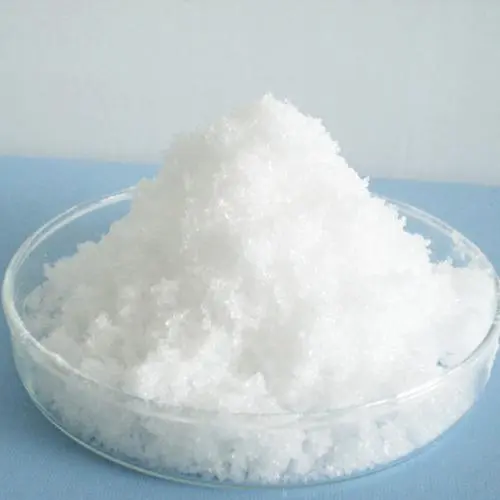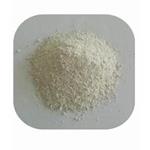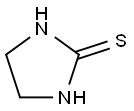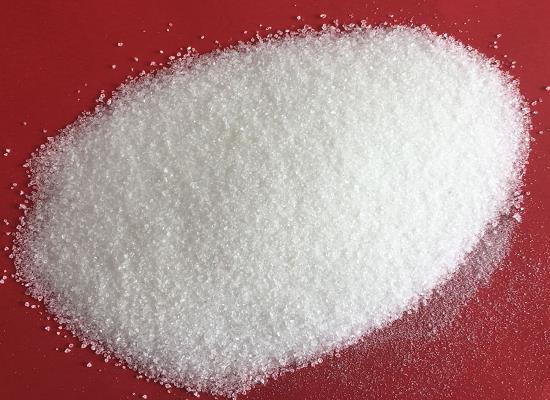Side effects and toxicity of Ethylene thiourea in humans
Introduction of Ethylene thiourea
Ethylene thiourea (ETU) is an imidazolidine compound with the appearance of a white crystalline solid, produced by the action of ethylenediamine on carbon disulphide in hydroalcohol. It has a wide range of applications and is mainly used as an accelerator for the vulcanisation of polychloroprene rubber (neoprene) and polyacrylate rubber. It is also used in electroplating solutions and in the production of antioxidants, insecticides (manufacture of ethylene dithiocarbamate pesticides), fungicides,, dyes, drugs, and resins.

Side effects and toxicity of Ethylene thiourea
Ethylene thiourea is used in the rubber industry and in the production of some fungicides. No information is available on the acute (short-term) or chronic (long-term) effects of ethylene thiourea in humans. In rodents chronically exposed to ethylene thiourea in their diet, effects on the thyroid have been observed. Ethylene thiourea has been shown to be a potent teratogen (causes birth defects) in rats orally or dermally exposed. A study of female workers occupationally exposed to ethylene thiourea did not report an increased incidence of thyroid cancer. In a study by the National Toxicology Program (NTP), an increased incidence of thyroid tumors in rats, and thyroid, liver, and pituitary gland tumors in mice exposed to ethylene thiourea were noted. EPA has classified ethylene thiourea as a Group B2, probable human carcinogen.
Animal studies have shown lesions in both the central nervous system and the skeletal system in rats, the severity of which depends on the dose. The severe effects seen at the two highest dose levels included meningoencephaloeele, meningorrhagia, meningorrhoea, hydrocephalus, obliterated neural canal, abnormal pelvic limb posture with equinovarus, micrognathia, oligodactyly and absent, short or kinky tail. Less serious defects were induced by 20 mg/kg, and at 10 mg/kg there was only a retardation of parietal ossification and of cerebellar Purkinje-cell migration. Retarded parietal ossification was the sole abnormality seen at 5 mg/kg, its incidence being limited to small areas and to a few large litters. Rabbits were far less affected by ETU treatment, showing only an increase in resorption sites and a reduction in brain weight at the highest dose level. Renal lesions, characterized by degeneration of the proximal convoluted tubules, were noted microscopically, but there were no skeletal abnormalities that could be attributed to ETU.
Human exposure to endocrine disrupting chemicals (EDCs) has become common as a result of widespread application of these chemicals to the food supply, environmental contamination, and occupational exposures (Caserta et al., 2011). However, relatively little is known about the effects of EDCs such as ethylene thiourea (ETU) in developing fetuses and the lasting implications of this disruption on human development from birth through adulthood. Of highest concern are chronic, low-dose exposures among industrial and agricultural workers. Current knowledge regarding the significance of endocrine thyroid signaling on normal human development raises serious concerns about the possible deleterious effects of EDCs in the developing fetus, children, and mature adults. Occupational health nurses are critical in identifying women and families at increased risk of ETU exposure and mitigating early exposures in pregnancy.
A case of allergic contact dermatitis to the rubber additive ethylene thiourea (ETU) is described. Cross-sensitivity testing showed a positive reaction to the fungicide Maneb® (manganese ethylene methylenedithiocarbamate), but this reaction was most likely caused by ETU, which was detected in Maneb® by thin-layer chromatography.ETU has been reported to have different sources.
References:
[1] 2681. The teratogenicity of ethylene thiourea[J]. Food and cosmetics toxicology, 1974. DOI:10.1016/0015-6264(74)90396-4.
[2] IBTIHEL BENDHIAB. A novel analytical approach for the determination of ethylene-thiourea and propylene-thiourea in vegetal foodstuffs by high-performance liquid chromatography hyphenated to inductively coupled plasma-tandem mass spectrometry.[J]. Analytical and Bioanalytical Chemistry, 2024. DOI:10.1007/s00216-023-05034-6.
[3] MAGNUS BRUZE; Sigfrid F. Allergic contact dermatitis from ethylene thiourea[J]. Contact Dermatitis, 1983. DOI:10.1111/j.1600-0536.1983.tb04360.x.
[4] ABBY D MUTIC; Linda A M; Brenda J Baker. Deleterious Effects From Occupational Exposure to Ethylene Thiourea in Pregnant Women.[J]. Workplace Health & Safety, 2017. DOI:10.1177/2165079916687312.
);You may like
Lastest Price from Ethylene thiourea manufacturers

US $20.93/Kg/Drum2024-05-08
- CAS:
- 96-45-7
- Min. Order:
- 25Kg/Drum
- Purity:
- 99.50%HPLC
- Supply Ability:
- 10tons/month

US $6.00/KG2024-04-12
- CAS:
- 96-45-7
- Min. Order:
- 1KG
- Purity:
- More than 99%
- Supply Ability:
- 2000KG/Month


